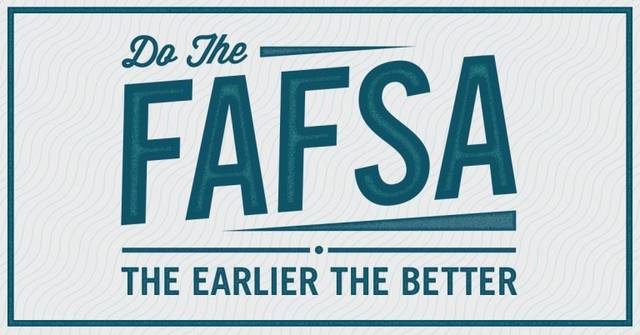Get Your FAFSA Ready
Sep 4, 2020

Mark this date on your calendar: October 1. That is the day when current and future traditional college students can start submitting the Free Application for Federal Student Aid (FAFSA) for the 2021-22 school year. For many students, the FAFSA is frequently the gateway to significant financial aid: federal and state student loans, grants, university scholarships, and work-study programs.1
FAFSAs should be sent in as soon as possible. The closer to “opening day” (October 1) you can do it, the better. Some states offer aid on a first-come, first-serve basis, and some universities set fall deadlines for financial aid requests.1,2
What do you need to complete the FAFSA form? First of all, the FSA I.D., which replaced the older PIN system some may recall. Your student needs one, and if your student is your dependent, you also need one. An FSA I.D. is a username-password combination that will let your student fill out the FAFSA form online (this can even be done with the myStudentAid mobile app on your smartphone). You can create your FSA I.D.s at pin.ed.gov. You can fill out the FAFSA form at the FAFSA website, fafsa.ed.gov, entering numeric codes for the colleges or universities your student is considering for the 2021-22 school year.3
Your student will need to enter a bunch of personal information, some of which will be yours if you have recently claimed them as a dependent. The basics? Birthdates, Social Security numbers, and even the student’s driver’s license number, if applicable.
Beyond the basics, financial information is needed, both from you and your student, including checking and savings accounts’ balances, investment account values, and business and rental property assets. Untaxed income (such as interest income and child support) must also be reported. In addition, you will need information from your 1040 income tax form for the 2019 tax year. Most of this tax information can be easily imported right into the FAFSA form, thanks to its Data Retrieval Tool, which connects directly with the Internal Revenue Service. Not everyone is able to use the DRT, though, and not all info carries over, so keep your 1040 forms from 2019 handy.3,4
Has your household income fallen since 2019? Then your student might qualify for more financial assistance than the FAFSA form calculates. A student can appeal an aid decision or ask for an adjustment to financial aid offered at any time, even during the midst of a quarter or semester.5 If you or your student need to pursue an adjustment, the first step will always be contacting the financial aid office of the school or institution in question.
You may have some leverage here. Enrollment is dropping at many universities, due to the pandemic, and the perception that pricier schools can’t currently offer a real college experience. Virtual classes might still be the norm in the Fall 2021 term. Attracting quality students is a top priority, and financial aid offices may be ready and willing to negotiate new aid packages well into the 2021-22 academic year.
Whenever a college considers awarding financial aid, it looks at the expected family contribution (EFC), which is calculated according to a formula set by law. The EFC is the amount of money the college believes you can pay toward your student’s education, and the EFC factors heavily into calculations of need-based aid (as opposed to merit-based aid, like scholarships).5
If your student receives more need-based aid, that may, in turn, reduce your EFC. Any revision of need-based aid can also potentially impact a student’s estimated cost of attendance (COA); sometimes, the COA rises with changes in financial aid. When the COA rises, or the EFC falls, a household may be eligible to apply for work-study programs and subsidized college loans. If you are considering what the best savings route for your child, feel free to reach out to us to discuss the various 529 plans and college saving plans that are available to you.
Tags: financial advisor charlotte nc, Tax Planning
More Insights
April showers came a month early as stocks fell in March. Tariffs were the primary cause of the market jitters, although that uncertainty became too much for markets to shrug off once economic data started to weaken.
A successful investor maximizes gain and minimizes loss. Though there can be no guarantee that any investment strategy will be successful and all investing involves risk, including the possible loss of principal, here are six basic principles that may help you invest more successfully.
Losing a spouse is a stressful transition. And the added pressure of having to settle the estate and organize finances can be overwhelming. Fortunately, there are steps you can take to make dealing with these matters less difficult.
Families are one of the great joys in life, and part of the love you show to your family is making sure that their basic needs are met. While that’s only to be expected from birth through the high school years, many households are helping their adult children well into their twenties and beyond at … Continue reading “Retirement and Adult Children”
Life insurance can be an excellent tool for charitable giving. Not only does life insurance allow you to make a substantial gift to charity at relatively little cost to you, but you may also benefit from tax rules that apply to gifts of life insurance.
Services
Epic Capital provides the following comprehensive financial planning and investment management services: Learn More >


 Top of Page
Top of Page











